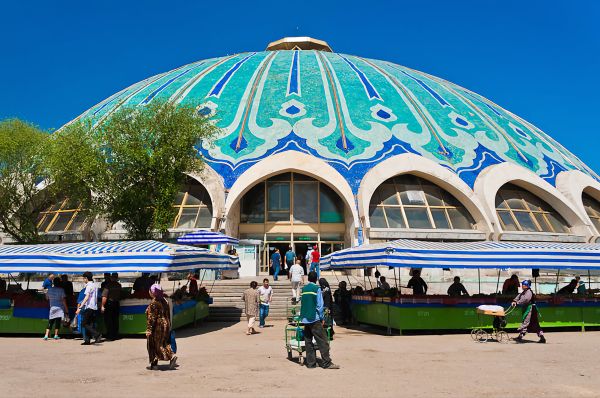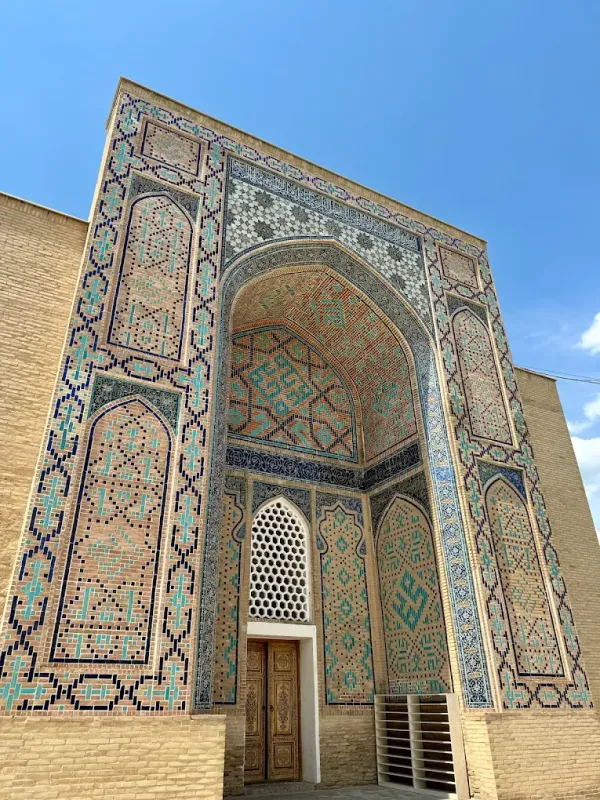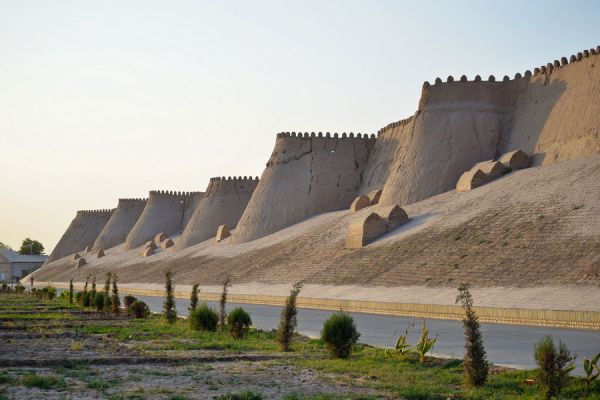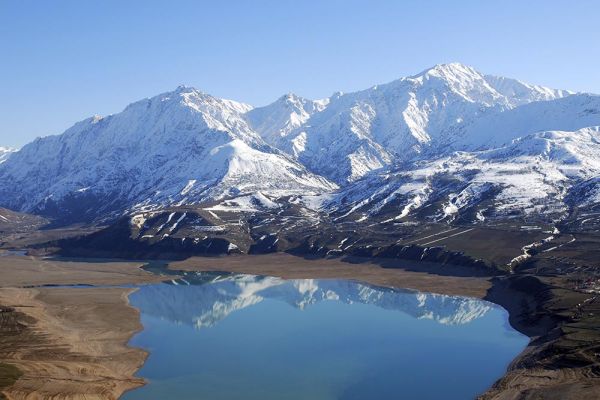Islam Khoja Complex
This almost modern complex, dating back to the beginning of the 20th century, includes a minaret and a madrasah, united under the name of Islam Khoja, the Prime Minister of Khiva Khan Isfandiyar. The minaret of Islam Khoja is called the symbol of Khiva.
Its shape, narrowed upward, dates back to the early examples of architecture (14th century). On the minaret, the brickwork alternates with stripes of glazed patterns. The height of the minaret is 56.6 meters, the diameter of the base is 9.5 meters.
Islam Khoja Madrasah is located behind the minaret. It consists of 42 hujras and a large domed hall. The skill of the architects can be seen in contrasting combinations of architectural forms, skillfully used in a limited space. The niche of the mihrab is decorated with majolica and ganch carvings. The facade is finished with glaze.














